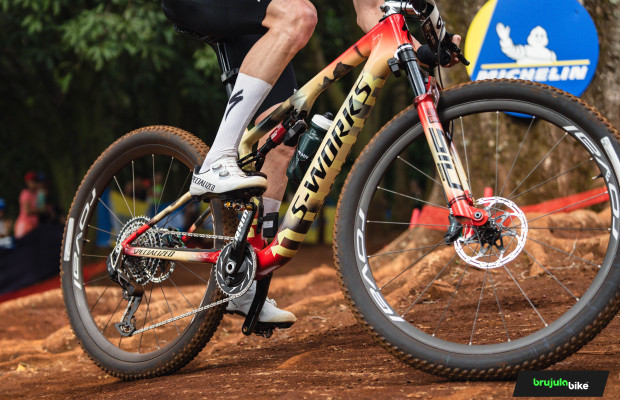Climbing sitting or standing, which is better?
When we think of a cyclist climbing a mountain pass, we all have the image of the suffering climber twisting standing on his pedals to painfully move the bike forward. A romantic image that in current cycling is becoming less common. However, is this the best technique for climbing? Like in many aspects of cycling, the answer is "it depends."

Standing or sitting, how to perform better on climbs
The technique that road cyclists use on climbs has varied greatly over the decades. The main reason can be found in the evolution of bike gearing, which has allowed cyclists to have enough range to tackle slopes that were once considered unrideable on a bike.
Let's not forget that, until the 90s, road bikes usually had a small chainring of 42 teeth and barely 6 cogs, with the largest one rarely exceeding a 23. With this equipment, obviously, when facing gradients above 10%, no matter how strong the cyclist was, the only alternative was to stand up just to keep pedaling.
RECOMENDADO

25 cycling gifts ideas to get it right

When do helmets have to be changed? Do they have an expiration date?

Some reasons to stay away from the road in winter

S-Works: what does it really mean and where does Specialized's most exclusive label come from?

The best apps for cycling and mountain biking

Black Friday 2025 cycling bargains: save on Garmin, POC, Maxxis and more

It was Lance Armstrong who began to change the paradigm by starting to use higher cadences, for which he remained seated for much longer, as described by his coach Chris Carmichael, trying to emulate mountain bikers whose climbing technique was more efficient, allowing him to overcome the loss of brute force after beating cancer.
Currently, it is much more common to see cyclists climbing seated most of the time, something they can afford since they all have cogs with more than 30 teeth, and as various laboratory studies show, climbing seated requires up to 10% less effort quantified in the necessary oxygen consumption.
This is because standing up involves more muscle involvement, not only from the legs but also from the torso muscles, which obviously translates into higher energy expenditure. Therefore, the general rule is to climb seated as much as possible.

However, standing up allows us to provide more power to the pedals, which can be an advantage in decisive moments of a race, and that's where the "it depends" we mentioned at the beginning comes in. Climbing a steady slope while drafting where those extra watts we get from standing up will hardly make a difference is not the same as climbing a nearly 20% gradient where every watt counts.
The type of cyclist is also really important when choosing the climbing style because, for a small and lightweight climber, pedaling standing up barely means extra effort, while for a more robust rider, the difference between standing and sitting is accentuated.
The type of climb is also relevant, and in long climbs, no matter how tough they are, it is not common to see climbers standing up, while in short and explosive climbs, where maximum power is sought, it is common to see cyclists standing on the pedals.

We cannot forget another relevant parameter in today's cycling, which is aerodynamics. Not long ago, it was common to see cyclists opening their jerseys on climbs to mountain passes and climbing standing on the pedals. Today, especially at the tremendous speeds at which climbs are done, especially when the slope does not exceed 8%, aerodynamics becomes a key factor, a parameter that is obviously maximized by remaining perfectly tucked to the bike, so standing up also means wasting watts in the fight against the wind.
However, as we explained before, standing up still remains a resource for specific moments or simply to relax the muscles during long climbs, although biomechanics has also made this less necessary for cyclists over time.